Wikipedia:Picture of the day/September 2004
|
Featured picture tools: |
These featured pictures, as scheduled below, appeared as the picture of the day (POTD) on the English Wikipedia's Main Page in September 2004.
You can add an automatically updating POTD template to your user page using {{Pic of the day}} (version with blurb) or {{POTD}} (version without blurb). For instructions on how to make custom POTD layouts, see Wikipedia:Picture of the day.Purge server cache
September 1
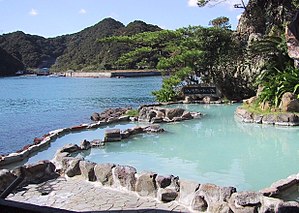
|
An onsen is a Japanese hot spring. The onsen is a Japanese public bath, or sento. and plays an important role in Japanese culture. As well as bathing facilities, onsens should include accommodation, extravagant cooking and all manner of relaxing pastimes - massages, aromatherapy, relaxation rooms and comfortable surroundings. Photo credit: Chris 73 |
September 2
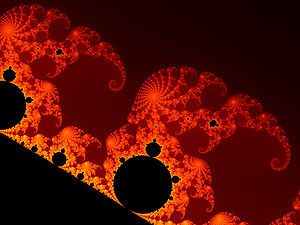
|
The Mandelbrot set is a fractal that is defined as the set of points in the complex number plane for which with z0 = 0 does not tend to infinity. The Mandelbrot set was first defined by Pierre Fatou in 1905, and first plotted on computer by Benoît Mandelbrot. The color reflects the number of iterations it takes to reach a certain distance from the origin. Photo credit: Evercat |
September 3
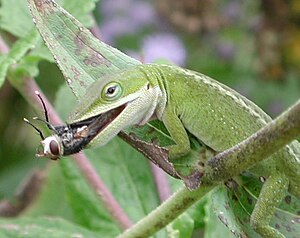
|
The Carolina Anole is a lizard found primarily in the south eastern parts of the United States. It has color-changing abilities, although it is not a chameleon. This lizard can reach a total length of about 22 cm. The male has a pink or red dewlap that extends from his chin. Green Anoles can have a green or a brown body colour, which depends on mood and climate. Photo credit: Pollinator
Recently featured:
|
September 4

|
The Gyeongbokgung is a palace located in Seoul, the capital of South Korea. Along with Changdeokgung, Changgyeonggung, Deoksugung and Gyeonghuigung, it is one of the "Five Grand Palaces" built by the Joseon Dynasty. This dynasty was founded in 1392 by Korean general Yi Seonggye, who overthrew the former kingdom of Goryeo and established the kingdom of Joseon. Photo credit: Kokiri
Recently featured:
|
September 5
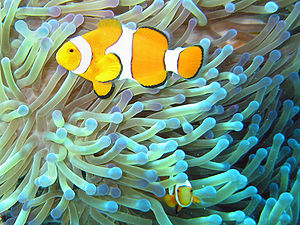
|
Common clownfish (Amphiprion ocellaris) The Clownfish are a subfamily of the family Pomacentridae, native to the Pacific Ocean. Clownfish are marked by their behavior of living in a comensual relationship with sea anemones. A school of clownfish is always built into a hierarchy with a female fish at the top. When she dies, the most dominant male changes sex and takes her place. Photo credit: Jan Derk
Recently featured:
|
September 6

|
Peppermint and Corsican mint plant. Peppermint (Mentha x piperita) is a sterile hybrid mint with a high menthol content, often used in tea and confectionery. Peppermint is the oldest and most popular flavour. Photo credit: Michael Thompson
Recently featured:
|
September 7

|
Glass ball from the Vérrerie of Brehat In its pure form, glass is a transparent, biologically inactive material. Hand blown glassware is popular for its artistry. Some artists in glass include Sidney Waugh, Rene Lalique, Dale Chihuly, and Louis Comfort Tiffany, who were responsible for extraordinary glass objects. The term "crystal glass", derived from rock crystal, has come to denote high-grade colorless glass, often containing lead, and is sometimes applied to any fine hand-blown glass. Photo credit: Chmouel Boudjnah
Recently featured:
|
September 8

|
A sand castle is a type of sand sculpture which resembles a miniature building, often a castle. Sand castles are typically made on beaches with wet fine sand and, optionally, tools such as shovels and buckets and reinforcers such as wood, usually by children, but also by adults who engage in sand sculpture contests, in which the goal is to create large and complex structures which do not appear to be constructed purely from sand. Photo credit: Guy King
Recently featured:
|
September 9

|
The star thistles, cornflowers and knapweeds are a group of thistle-like plants in the Genus Centaurea of the Family Asteraceae. Some 350 species of herbaceous flowering plants belong to Centaurea, most native to the Old World. One species in this genus is the Centaurea solstitialis, shown in the picture. Also called the Yellow star thistle, this is an annual that grows to a height of 1 to 2.5 feet. This plant is widely naturalized outside of its native Europe. Photo credit: Peggy Greb
Recently featured:
|
September 10

|
In BDSM, a collar is a device of any material placed around the neck of the submissive partner. Materials used include leather, rubber, PVC, and metal. Collars may be decorated in various ways, and often feature buckles, straps and hooks, padlocks and other attachments. The standard colour is black, however variation is possible, including elegant necklaces. Photo credit: Grendelkhan
Recently featured:
|
September 11
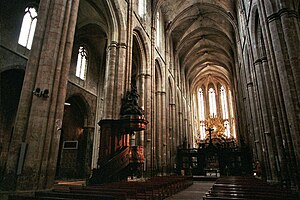
|
The Basilica of Mary Magdalene in Saint-Maximin-la-Sainte-Baume is a conservative 13th century Gothic church in Provence, France. Saint-Maximin-la-Sainte-Baume is a commune of southern France, in the département of Var. Photo credit: Ericd
Recently featured:
|
September 12

|
The Ray and Maria Stata Center is an academic complex designed by Frank Gehry for the Massachusetts Institute of Technology in Cambridge, Massachusetts, United States. The building opened in spring 2004. Funding for this project was provided by Ray and Maria Stata, Bill Gates and Alexander Dreyfoos. Photo credit: Raul654
Recently featured:
|
September 13
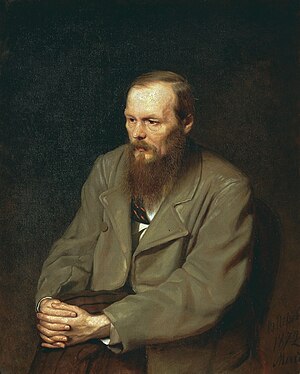
|
Portrait by Vasily Perov, 1872. Fyodor Dostoevsky (1821-1881) was an influential figure in Russian literature, and is sometimes said to be a founder of existentialism. His novels include The Brothers Karamazov and Crime and Punishment. Dostoevsky was imprisoned in 1849 for engaging in revolutionary activity against Tsar Nicholas I. He later abandoned his radical sentiments and became deeply conservative and extremely religious. In the 1860s, Dostoevsky traveled to Western Europe to escape creditors. He married Apollinaria Suslova in 1867 and wrote many of his greatest books in this period.
Recently featured:
|
September 14

|
Mount Rainier is a stratovolcano and national park southeast of Seattle, Washington in Pierce County. The most recent recorded eruption was between 1820 and 1854, but many eyewitnesses reported eruptive activity in the late 1800s. Photo credit: JediMaster16
Recently featured:
|
September 15
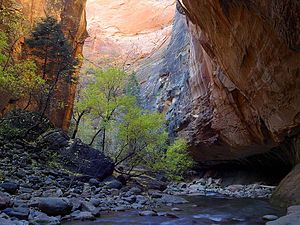
|
The Virgin River Narrows in Zion National Park, located near Springdale, Utah, is a 16-mile long slot canyon along the Virgin River. Recently rated as number five out of National Geographic's Top 100 American Adventures, it is one of the most rewarding hikes in the world. Photo credit: Jon Sullivan, pdphoto.org
Recently featured:
|
September 16

|
Monopoly is one of the best selling board games in the world. Since the invention of the original version in 1904, it is estimated that more than 500 million people have played the game. Monopoly involves a substantial portion of luck, there are, however, many strategic decisions which allow skilled players to win more often than the unskilled. Photo credit: Horst Frank
Recently featured:
|
September 17

|
Sainte Jeanne d'Arc Church at night. Sainte Jeanne d'Arc Church is a Catholic church in Nice, France which is noticeable for its original architecture. The church was built between 1926 and 1933 by the architect Jacques Dror in reinforced concrete. The style was influenced by Art Nouveau. Photo credit: Ericd
Recently featured:
|
September 18

|
The Polyphemus Moth (Anthera polyphemus) is one the biggest moths, having a wingspan of up to 15 cm. Usually found in forests, moths are notable for apparently being attracted to light, the reason for this behaviour is not known. Photo credit: Fir0002
Recently featured:
|
September 19
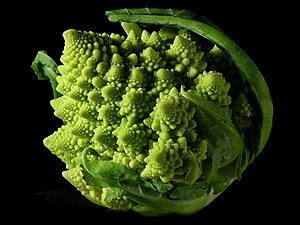
|
Broccoli, a plant of the Cabbage family, Brassicaceae, is a cool-weather crop eaten boiled, steamed, or raw. The Roman natural history writer, Pliny the Elder, wrote about a vegetable which might have been broccoli and some recognize broccoli in the cookbook of Apicius, but its history is unclear. Broccoli was certainly an Italian vegetable long before it was eaten elsewhere. Photo credit: pdphoto
Recently featured:
|
September 20

|
Eastern Yellow Robin. The Eastern Yellow Robin (Eopsaltria australis) is a common resident of coastal and sub-coastal eastern Australia, from the extreme south-east corner of South Australia through most of Victoria and the western half of New South Wales and north as far as Cooktown, though tropical northern Queensland birds are mainly restricted to the cool heights of the Great Dividing Range. Photo credit: Tony Wilson
Recently featured:
|
September 21

|
Antarctica, the continent surrounding the Earth's South Pole, is the coldest place on earth and is almost entirely covered by ice. Antarctica was discovered in late January 1820. Too cold and dry to support virtually any vascular plants, Antartica's flora presently consists of around 250 lichens, 100 mosses, 25-30 liverworts, and around 700 terrestrial and aquatic algal species. Photo credit: NASA
Recently featured:
|
September 22
| File unavailable |
The blue ice covering Lake Fryxell in the Transantarctic Mountains –a mountain range in Antarctica– comes from glacial meltwater from the Canada Glacier and other smaller glaciers. The freshwater stays on top of the lake and freezes, sealing in briny water below. Photo credit: Joe Mastroianni
Recently featured:
|
September 23

|
|
The Sombrero Galaxy is a spiral galaxy in the Virgo constellation. It was discovered in the late 1700s. It is about 28 million light years away and is just faint enough to be invisible to the naked eye but easily visible with small telescopes. In our sky, it is about one-fifth the diameter of the full moon. M104 is moving away from Earth at about 1,000 kilometers per second.
Recently featured:
|
September 24

|
The Emperor Penguin is the largest of all penguins. Like his King Penguin counterpart, a male Emperor Penguin has an abdominal fold, the "brood pouch", between its legs and lower abdomen. The male will incubate an egg in its brood pouch for 65 days without food by surviving on his fat reserves. Photo credit: Josh Landis
Recently featured:
|
September 25

|
Strokkur geyser exploding. A geyser is a special type of hot spring that erupts periodically, ejecting a column of hot water and steam into the air. Strokkur geyser is found in Geysir in the Haukadalur valley, Iceland. Photo credit: Hannah Beker
Recently featured:
|
September 26

|
Magnetic resonance imaging is a commonly used form of medical imaging which creates images of the inside of opaque organs in living organisms and detects the amount of bound water in geological structures. It is primarily used to visualise alterations of living tissues. A functional MRI scan (shown in the image) measures signal changes in the brain that are due to changing neural activity. Photo credit: Fastfission
Recently featured:
|
September 27

|
|
1980 eruption of Mount St. Helens, Washington, US Mount St. Helens from Monitor Ridge showing the cone of devastation, the huge crater open to the north, and the post eruption lava dome inside it. The small photos were taken from Spirit Lake before and after the eruption. Spirit Lake can also be seen in the larger image, as well as two other Cascade volcanos. Photo credit: Daniel Mayer, U.S. Forest Service and USGS
Recently featured:
|
September 28

|
A newborn joey (baby kangaroo) in its mother's pouch. Kangaroo babies are born at a very early stage of development after a gestation of 31-36 days. At this stage, only the forelimbs are somewhat developed, to allow the newborn to climb to the pouch and attach to a teat. It will not re-emerge for several months, during which time it develops fully. Photo credit: Geoff Shaw, University of Melbourne, Australia
Recently featured:
|
September 29

|
The LG-118A Peacekeeper missile system being tested at the Kwajalein Atoll in the Marshall Islands. The Peacekeeper can carry up to ten re-entry vehicles, each armed with a nuclear warhead with the explosive power of up to 300 kilotons, 25 times the power of the bomb dropped on Hiroshima at the end of World War II). Under the unratified START II treaty, all are to be removed from service by 2005. Photo credit: U.S. Army Forces Strategic Command
Recently featured:
|
September 30
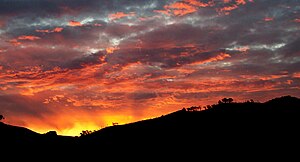
|
A red Sunset. The red-hue is explained by the phenomenon of Rayleigh scattering. The sunset is often more brightly coloured than the sunrise because there is more dust at the end of the day than at its beginning. Because the light from the Sun is bent by the variable density of the Earth's atmosphere, the Sun is still seen after it is below the horizon. Photo credit: Fir0002
Recently featured:
|
Picture of the day archives and future dates

